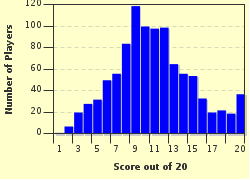Quiz Answer Key and Fun Facts
1. What was the name of the unusual contraption that shot around corners?
2. What tank series was the precursor to the powerful IS series?
3. This was one of the Japanese warships sunk at Midway, and also was part of the fleet that attacked the Pearl Harbor.
4. This battle actually occurred before World War 2, but had a huge impact on the actual war.
5. After the turning point at El Alamein, Rommel and the Axis were once again pushed back into the Italian colony of _____ , which became an independent country after the war.
6. What was the predecessor to the Walther P38, the P08 pistol was used by the Germans, commonly called?
7. This capital ship was sunk at the first battle where the opposing ships never sighted each other.
8. The most modern French battle tank is named in honor of this World War II general.
9. Operation Ironclad was the planned and executed operation for capturing this island.
10. At this battle, five ships were destroyed or severely damaged by the British, with only two fatalities on the British side.
11. When Soviet troops halted at the outskirts of Warsaw during the uprising, their excuse was that the Germans were under the able command of a general. Who was this general?
12. This operation was comprised of a large percentage of airborne troops, in an almost experimental use of airborne troops. Almost none of the airborne units secured their objectives, but incoming reinforcements saved them.
13. What did the German call the Second Ardennes Offensive, or the Battle of the Bulge?
14. The governments of the United States, Great Britain, Australia, and what other nation formed the joint command of ABDA for a few short weeks in the Pacific?
15. This city was the site of a horrific mass rape and killings, one of the darkest moments of the war.
16. What was Anthony McAuliffe's immortal response to the German demand to surrender?
17. This operation is the largest amphibious operation to date, and breached the German Atlantic Wall.
18. This Ukrainian city was the site of one of the only Eastern Front sieges in which Germany did not have the main role.
19. This American leader held the largest field command ever held by an American general.
20. Often regarded as one of the finest Japanese tactical commanders, this leader was responsible for the Marianas Turkey Shoot
Source: Author
kabeesh
This quiz was reviewed by FunTrivia editor
bloomsby before going online.
Any errors found in FunTrivia content are routinely corrected through our feedback system.


